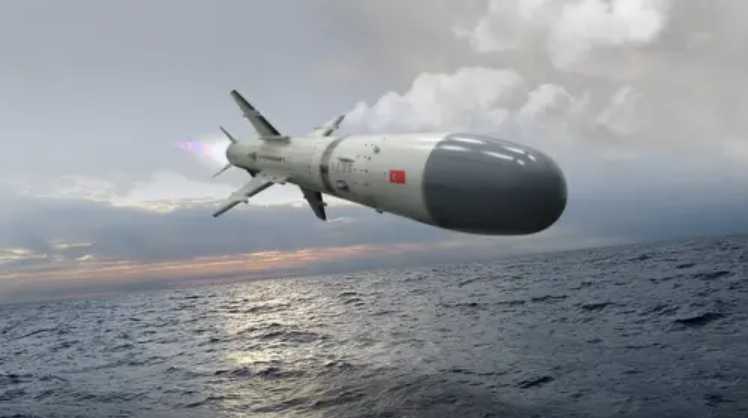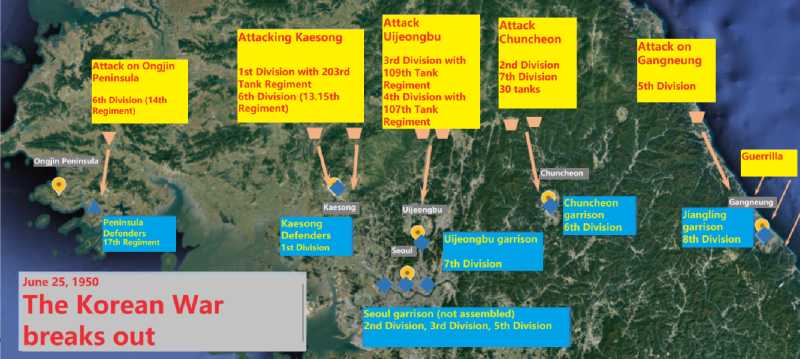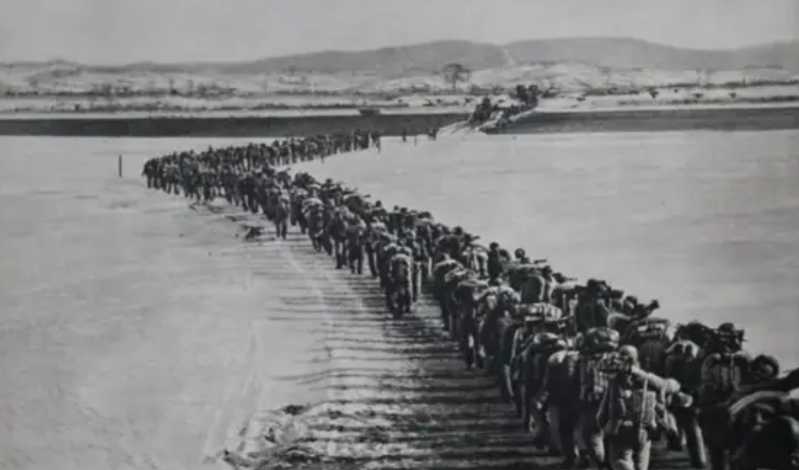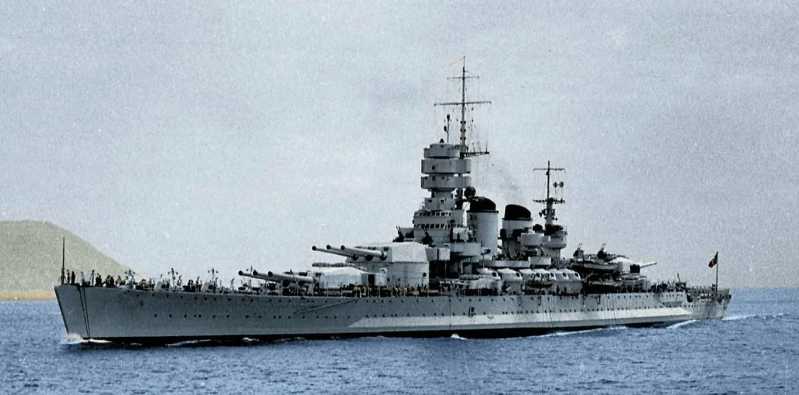On June 18, 2021, under the observation of a delegation of military attachés from many countries, Turkey’s "Sparrowhawk" anti-ship missile completed the last live-fire test before finalization, indicating that the Turkish Navy and the international military trade market are about to usher in a new product.
On June 18, 2021, under the observation of a delegation of military attachés from many countries, Turkey’s "Sparrowhawk" anti-ship missile completed the last live-fire test before finalization, indicating that the Turkish Navy and the international military trade market are about to usher in a new product.
The need for replacement due to actual equipment needs
The need for replacement due to actual equipment needs
Under the interests of island ownership, Mediterranean oil and gas fields, and the division of regional spheres of influence, Turkey has a very delicate relationship with Greece, Israel, Egypt, Libya and other countries around the Mediterranean. As the vanguard of conflicts in this region, the Turkish Navy naturally bears increasing combat pressure. In terms of anti-ship strike capability, the surrounding countries are equipped with a large number of anti-ship missile weapon systems including "Harpoon", "Penguin", "Flying Fish" and "Gabriel". In contrast, the Turkish Navy is currently equipped with only two types of anti-ship missiles, facing a double crisis in quantity and quality.
Amid the disputes over the ownership of islands and reefs, the division of Mediterranean oil and gas fields and regional spheres of influence, Turkey’s relations with Greece, Israel, Egypt, Libya and other countries around the Mediterranean are very delicate. As the vanguard of conflicts in this region, the Turkish Navy naturally bears increasing combat pressure. In terms of anti-ship strike capability, the surrounding countries are equipped with a large number of anti-ship missile weapon systems including "Harpoon", "Penguin", "Flying Fish" and "Gabriel". In contrast, the Turkish Navy is currently equipped with only two types of anti-ship missiles, facing a double crisis in quantity and quality.
Currently, the main combat force of the Turkish Navy is more than 200 "Harpoons" produced by Boeing of the United States, which have anti-ship and certain shore attack capabilities (Block2 version). Including, the RGM-84A Block1 type used by surface ships, which has a maximum range of 125 kilometers, has no waypoint planning capability, and is gradually being retired; RGM-84D Block1C, which can define 3 waypoints and achieve a maximum range of 140 kilometers; RGM-84G Block1G, which can define 8 waypoints, can fly in a 15-meter sea-skimming mode, and has the ability to attack again with an intelligent seeker; RGM-84L Block2, which uses a sea-skimming mode below 15 meters, replaces the seeker with a stronger sea clutter and ground echo suppression mode, and adopts a new GPS/INS navigation module with anti-interference capability, etc., to improve the penetration hit rate while having the ability to attack the opposite shore; Submarines use UGM-84C (Block1C) and UGM-84G (Block1G), which are relatively small in number compared to ship-borne types, with only about 30.
Currently, the main combat force of the Turkish Navy is more than 200 "Harpoons" produced by Boeing of the United States, which have anti-ship and certain shore attack capabilities (Block 2 version). Including, the RGM-84A Block1 type used by surface ships, which has a maximum range of 125 kilometers, has no waypoint planning capability, and is gradually being retired; RGM-84D Block1C, which can define 3 waypoints and achieve a maximum range of 140 kilometers; RGM-84G Block1G, which can define 8 waypoints, can fly in a 15-meter sea-skimming mode, and has the ability to attack again with an intelligent seeker; RGM-84L Block2, which uses a sea-skimming mode below 15 meters, replaces the seeker with a stronger sea clutter and ground echo suppression mode, and adopts a new GPS/INS navigation module with anti-interference capability, etc., to improve the penetration hit rate while having the ability to attack the opposite shore; Submarines use UGM-84C (Block1C) and UGM-84G (Block1G), which are relatively small in number compared to ship-borne types, with only about 30.
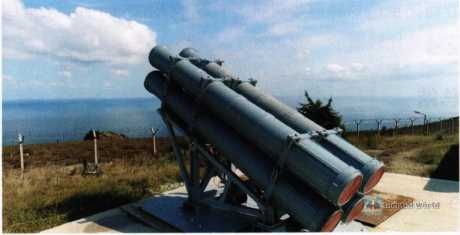

The latest model of the RGM-84L Block2 currently equipped by the Navy is not only limited in quantity, but also difficult to purchase. The initial purchase plan for this batch of ammunition was exposed in June 2007. According to the information reported by the U.S. Department of Defense to the U.S. Congress at that time, the Turkish Navy planned to purchase 51 "Harpoon" Block2 missiles and some of their spare parts, including 8 for the MK13 launchers of G-class frigates, 38 for the Mk141 launchers on the "Barbaros" class frigates and "Island" class frigates, and the remaining 5 for submarines. However, according to a report released by the U.S. Department of Defense in 2010, this batch of Turkish orders actually only delivered a total of 25 missiles in 2008 (9 missiles) and 2010 (16 missiles), all of which were ship-borne launch models. Some missile boats and ship-borne helicopters use the "Penguin" anti-ship missiles developed by international cooperation. Among them, the "Qatar" class missile boat is equipped with the passive infrared guided "Penguin" MK2 with a range of 27 kilometers. It is worth mentioning that the arch-enemy Greece also uses this model on missile boats, but the two countries differ in the model of the boat-borne fire control director. In April 2008, On the 1st of this month, the Turkish Navy spent $41 million to order Penguin MK2 Mod7 air-to-ship missiles for the 17 Seahawks equipped at the time. Although the exact number is unknown, considering the unit price of $330,000 in the same product contract with the Brazilian Navy and other countries during the same period, the number should be around 100.
The latest model RGM-84L Block2 currently equipped by the Navy is not only limited in quantity, but also difficult to purchase in the future. The initial purchase plan for this batch of ammunition was exposed in June 2007. According to the information reported by the US Department of Defense to the US Congress at the time, the Turkish Navy planned to purchase 51 "Harpoon" Block2 missiles and some of their spare parts, including 8 for the MK13 launchers of G-class frigates, 38 for the Mk141 launchers on the "Barbaros" class frigates and "Island" class frigates, and the remaining 5 for submarines. However, according to a report released by the US Department of Defense in 2010, only 25 missiles were actually delivered in 2008 (9 missiles) and 2010 (16 missiles), and all of them were ship-launched missiles. Some missile boats and ship-borne helicopters used the "Penguin" anti-ship missiles developed by international cooperation. Among them, the "Qatar" class missile boats are equipped with the passive infrared guided "Penguin" MK2 with a range of 27 kilometers. It is worth mentioning that the arch-enemy Greece also uses this model on missile boats, but the two countries differ in the model of the onboard fire control director. On April 1, 2008, the Turkish Navy spent 41 million US dollars to order the "Penguin" MK2 Mod7 air-to-ship missiles for the 17 "Sea Hawks" equipped at the time. Although the specific number is unknown, combined with the unit price of 330,000 US dollars in the same product contract with the Brazilian and other navies during the same period, the number should be around 100.
In terms of quantity, the Turkish Navy currently needs to equip surface ships with anti-ship missiles, up to 20 frigates of 3 types and more than 20 missile boats of 3 types. Considering the aging and retirement of the ammunition in the design of two quadruple launchers or ammunition depots used by a single ship, as well as the mass commissioning of new ships in the future, the existing "Harpoon" is actually difficult to meet the needs of combat readiness. On March 31, 2017, in the "Starfish-2017" exercise organized by the Turkish Navy Command, the "Island" class frigate F-511 and the GOR class S-358 successively launched an RGM-84LBlock2 and UGM-84 Block1C at the target ship and successfully hit the target. Considering that the Turkish Navy has frequently conducted exercises in recent years, the existing number of "Harpoons" available is already in jeopardy. The underwater situation is even less optimistic. There are only about 20 submarine-launched "Harpoons" available for 12 conventional submarines of 3 types, and the latest 214 domestic models even have to continue to use this batch of ammunition.
In terms of quantity, the Turkish Navy currently needs to equip surface ships with anti-ship missiles, up to 20 frigates of 3 types and more than 20 missile boats of 3 types. Considering the aging and retirement of the ammunition in the design of two quadruple launchers or ammunition depots used by a single ship, as well as the mass commissioning of new ships in the future, the existing "Harpoon" is actually difficult to meet the needs of combat readiness. On March 31, 2017, in the "Starfish-2017" exercise organized by the Turkish Navy Command, the "Island" class frigate F-511 and the GOR class S-358 successively launched an RGM-84LBlock2 and UGM-84 Block1C at the target ship and successfully hit the target. Considering that the Turkish Navy has frequently conducted exercises in recent years, the existing number of "Harpoons" available is already in jeopardy. The underwater situation is even less optimistic. There are only about 20 submarine-launched "Harpoons" available for 12 conventional submarines of 3 types, and the latest 214 domestic models even have to continue to use this batch of ammunition.
In addition to quantity, let’s look at quality. At present, the "Harpoon" equipped by the Turkish army is still mainly 1C. After the "Harpoon" that can fully exert its effectiveness under the complete reconnaissance and strike system of the US Navy is separated from this system, it has no advantage in range and penetration capability compared with the MM40 "Exocet" and other models of the Greek Navy. As for the use of short-range anti-ship missiles such as "Penguin", its passive infrared guidance mode and flat trajectory are difficult to play a role under the increasingly improved electronic countermeasures system of surface ships. The Turkish Navy lacks medium- and long-range anti-ship missiles used by supporting fighters and fixed-wing anti-submarine patrol aircraft.
In addition to quantity, let’s look at quality. At present, the "Harpoon" equipped by the Turkish army is still mainly 1C. After the "Harpoon" that can fully exert its effectiveness under the complete reconnaissance and strike system of the US Navy is separated from this system, it has no advantage in range and penetration capability compared with the MM40 "Exocet" and other models of the Greek Navy. As for the use of short-range anti-ship missiles such as the "Penguin", its passive infrared guidance mode and flat trajectory are difficult to play a role under the increasingly improved electronic countermeasures system of surface ships. The Turkish Navy lacks medium- and long-range anti-ship missiles used by supporting fighters and fixed-wing anti-submarine patrol aircraft.
In addition to the problems of quantity and quality, the Turkish Navy’s continued use of the "Harpoon" also has certain political and technical risks. On the one hand, it has been embargoed after political disputes with the United States, Canada and other countries in recent years, which has brought difficulties to subsequent purchases. It is reported that the Turkish Navy planned to purchase UGM-84LBlock2 for the GOR class and the domestic 214 type in early January 2019, but it has obviously been shelved. On the one hand, as a weapon system widely equipped by neighboring countries, the performance parameters of the "Harpoon" are no longer a secret, and there are many targeted countermeasures. There are certain risks in the performance of its effectiveness in future naval battles, which is not conducive to the formation of technical advantages; on the other hand, with the US Navy turning to the NSM anti-ship missile, the subsequent development and production prospects of the "Harpoon" are not clear, and the export price has soared to about 1.5 million US dollars per piece. Considering the rapid development of the Turkish Navy’s shipbuilding industry in recent years, it has exported many frigates to Pakistan, Ukraine and other countries. Exporting anti-ship missiles with ships is also a high value-added business.
In addition to the quantity and quality issues, the Turkish Navy continues to use "Harpoon" and there are certain political and technical risks. On the one hand, it has been embargoed after political disputes with the United States, Canada and other countries in recent years, which has brought difficulties to subsequent purchases. It is reported that the Turkish Navy planned to purchase UGM-84LBlock2 for the GOR class and the domestic 214 type in early January 2019, but it has obviously been shelved. On the one hand, as a weapon system widely equipped by neighboring countries, the performance parameters of "Harpoon" are no longer a secret, and there are many targeted countermeasures. There are certain risks in the performance of its effectiveness in future naval battles, which is not conducive to forming a technical advantage; on the other hand, with the US Navy turning to NSM anti-ship missiles, the subsequent development and production prospects of "Harpoon" are not clear, and the export price has soared to about 1.5 million US dollars per piece. Considering the rapid development of Turkey’s naval shipbuilding industry in recent years, it has exported a number of frigates to Pakistan, Ukraine and other countries. Exporting anti-ship missiles along with the ships is also a high value-added business.
The origin and development of the "Sparrowhawk" project
The origin and development of the "Sparrowhawk" project
In response to actual needs, the Turkish Defense Industry Administration (SSB) and Rotasant Ammunition Technology Company (ROTASANT) signed a contract for the development of the "Sparrowhawk" (ATMACA) anti-ship missile on May 8, 2009. The total investment of the project, which officially took effect on October 14, 2009, is about 80 million euros. It is planned to deliver the first batch of 100 "Sparrowhawk" anti-ship missiles from December 31, 2016.
In response to actual needs, the Turkish Defense Industry Administration (SSB) and Rotasant Ammunition Technology Company (ROTASANT) signed a contract for the development of the ATMACA anti-ship missile on May 8, 2009. The total investment of the project, which officially took effect on October 14, 2009, was about 80 million euros. The first batch of 100 ATMACA anti-ship missiles was scheduled to be delivered from December 31, 2016.

However, in the subsequent research and development, the project progress was greatly delayed due to the relatively weak domestic technical accumulation. Rotasant conducted the first powered flight test of the ballistic test missile in 2014, and made a lot of modifications and improvements to the problems exposed, and did not continue the flight test until the summer of the following year. With the basic aerodynamic layout completed, the sea launch test of the self-controlled missile equipped with a navigation control system was carried out intensively from 2016 to 2018.
Starting from 2019, the finalization test was carried out at a test schedule of 3 launches per year. The two launches on May 18 and September 18, 2019 were both launched from the fixed launcher on the shore of the test site to the Black Sea. The missile with an inert warhead equipped with measurement, control and recording equipment successfully hit the floating target arranged on the sea surface in advance. At the same time, the fourth F-514 "Konar Island" frigate of the "Island" class (equipped with the Turkish-made GENESISADVENT shipborne command and control system), which was designed with a fire control interface reserved at the beginning, also completed the integration of the "Sparrowhawk" on board. At 10:15 am on November 3, it carried out the first shipboard launch and hit the target. The test at this stage mainly verifies the reliability and adaptability of various systems on the missile.
The three tests in 2020 were all shore-based launches, mainly to verify the various functions of the "Sparrowhawk". The test on July 1st mainly verified the data relay capability. After receiving the new target information given by the data link, the "Sparrowhawk" successfully changed the subsequent strike process parameters and finally successfully passed the target into the water; a target test was originally planned on August 30, but it was finally cancelled for some reason; in the test on September 25th, a multi-waypoint maneuvering flight was successfully carried out, and it finally dropped to an astonishing 0.93 meters when it passed the target: the launch test without GPS signal and terminal electronic interference background was successfully carried out on December 18.
In 2021, the ship-borne launch and live-fire target shooting were mainly carried out through the F-514 ship. On February 3, the inert warhead missile target shooting was carried out, equipped with FLIR 380HD The Navy’s Anka B reconnaissance and strike drone, equipped with a type of optoelectronic sensor, recorded the final serpentine penetration and target passing process of the Sparrowhawk in real time at an altitude of 4,000 meters. In the launch test on February 4, live ammunition was used to successfully destroy the floating target at sea. The final finalization test of the Sparrowhawk was carried out on June 18. On that day, military attachés from Azerbaijan, Indonesia, Pakistan and other countries observed on site. The retired No. 589 submarine rescue ship of the Turkish Navy was used as a target and was arranged about 70 kilometers away from the F-514 ship in a straight line. After the launch, the Sparrowhawk made several turns according to the preset waypoints, and finally successfully hit the port side of the target ship at an altitude of about 1.5 meters. Because the internal compartments of the target ship had been closed in advance and all kinds of flammable and explosive items had been cleared, the target ship struggled on the sea for 50 minutes after being hit. It took more than 20 minutes to finally sink.
Classic design of "Sparrowhawk"
The appearance of "Sparrowhawk" is a very "typical" conventional design of ship-borne subsonic anti-ship missiles, which is almost the same as "Harpoon" and "Exocet". According to the latest data released by Roxanne at the IDEF-2021 exhibition, the "Sparrowhawk" missile is 4.8 meters long, the ship-borne type with booster is 5.2 meters, the wingspan is 1.4 meters, the diameter is 350 mm, and the weight is less than 750 kg, including 220 kg of warhead. The missile body adopts a round oval head, with 4 large aspect ratio trapezoidal wings in the middle, 4 trapezoidal control tail wings at the tail, and 4 rectangular stabilizing tail wings arranged on the booster, arranged in an X-X-X shape from front to back. The missile uses a French-made TRI-40 turbojet engine with a flight speed of about 0.85~0.95 Mach. Unlike the recessed air intake of the Harpoon, the Sparrowhawk has an obvious air intake structure on the belly of the missile.
Under the auspices of the Roxan Ammunition Technology Company, more than 30 military enterprises in Turkey participated in the development of the missile, and the estimated purchase price is only about US$500,000 per missile.
From the actual pictures of the launch platform at the Sinop test site and the F-514 ship, it can be seen that the ship-borne Sparrowhawk launcher is exactly the same as the MK141 4-mounted launcher used by the Harpoon. This launcher occupies a smaller deck area than the rectangular launcher used in models such as the Flying Fish, which is convenient for layout and replacement and export of existing ships. However, the disadvantage is that the inner diameter of the barrel-shaped storage and transportation launch barrel is small, and the missile wings need to be fully folded. In order to adapt to this launcher, the Sparrowhawk, which is slightly thicker than the Harpoon, can only fold the large missile wings twice, and even the tail rudder is very rarely folded.
"Sparrowhawk" mainly uses data link relay, route planning, ultra-low altitude sea-skimming flight, terminal serpentine maneuvering and other means to increase the probability of penetration.
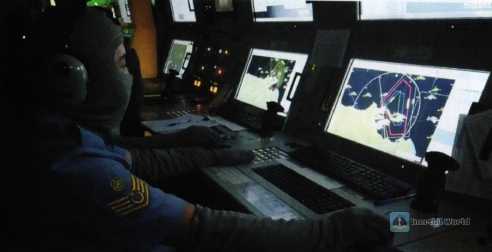
As a subsonic anti-ship missile, the maximum range of more than 250 kilometers places high demands on both target search and identification and data relay. During the nearly 14-minute flight, the real-time correction assistance of the data link is necessary to ensure the smooth detection of the target in the terminal guidance phase. In this field, the Turkish defense industry is completely starting from scratch. Meteksan Defense Company began to develop data links for the MTAS (medium-range anti-tank missile weapon program, including OMTAS/UMTAS) system in 2009. After the completion of this project, it also carried out the C-band data link design for TB-2 and "Anka" UAVs, as well as the data link development including HiSAR (surface-to-air missile system) and SOM (out-of-area missile). Starting in January 2014, in order to meet the needs of the domestic GEZGIN cruise missile, it carried out Development of KEMENT missile-borne data link. However, with the delay of this project, "Sparrowhawk" has become the first model of this system.
With the help of the tactical data link system, "Sparrowhawk" can change targets and update target parameters during flight, as well as control the missile to self-destruct when the mission is terminated. This system includes three models: missile-borne, ship-borne and airborne. Considering that the Turkish Navy is currently equipped with 24 S-70 "Seahawks", 2 P-72s and 6 CN-235MPA fixed-wing anti-submarine patrol aircraft, as well as 16 long-flight drones including TB-2 and "Anka" B/S, it has strong far-sea reconnaissance, detection and identification capabilities. After the above-mentioned reconnaissance platforms are equipped with airborne data terminals, the effective range and combat effectiveness of "Sparrowhawk" can be greatly exerted.

The route planning capability is a key technology to meet the use of various sea areas, evade enemy air defense firepower, coordinate attacks, and achieve omnidirectional saturation attacks. For the Turkish Navy, this technology is particularly important when used in the multi-island sea area in the western sea direction where there is a dispute with Greece. Although the maximum range and route planning capability of the Sparrowhawk have not been announced, the total range of about 220 kilometers after four turning maneuvers in the test on September 25, 2020, considering the energy loss caused by the maneuver and the diamond route setting adopted on that day, the maximum range of the Sparrowhawk should be more than 250 kilometers, and it has more than 4 route planning points.
The Sparrowhawk missile body does not adopt a stealth design, but achieves a covert approach to the enemy through a mid-course low-altitude sea-skimming flight trajectory. After the Harpoon is launched, the solid rocket will send the missile to an altitude of more than 700 meters with an acceleration of nearly 10g and then fall off. In the Sparrowhawk, under a lower trajectory, the missile altitude is only 100-150 meters when the solid rocket falls off after about 6 seconds of operation. After the engine is started, it will further drop to a cruising altitude of less than 30 meters; in the middle stage, with the assistance of anti-interference GPS/INS guidance and air pressure and radar altimeters, it flies according to the data bound by the on-board computer and data link information. The terminal guidance head of the Sparrowhawk adopts a two-axis mechanically stabilized Ku-band radar with an anti-interference design. Although the radar startup distance has not been disclosed, judging from the target test, the missile will drop to 5 meters again and gradually drop in height after startup to avoid the ship-borne medium-range air defense missile system. The lowest target altitude in the target test can reach 0.93 meters. Unlike the leap-dive maneuver adopted by the Harpoon, the Sparrowhawk adopts a serpentine maneuver penetration strategy to counter the ship-borne terminal air defense system. In several target tests conducted in 2021, it can be seen that the "" began to perform violent left and right maneuvers in the horizontal direction tens of seconds before hitting the target. The key lies in the missile-borne autopilot and its own high overload "Sparrowhawk" can withstand maneuverability. According to Rockthorn, the maximum overload is 12g. Perhaps it uses a large-size main wing for this reason. This penetration strategy is highly efficient, but the sea-skimming altitude is greatly affected by meteorology and hydrology. After all, long-term sea-skimming flight is mainly based on the wave crest height as a reference, and it is easy to overshoot when facing small targets.

The deployment and future development plan of the Sparrowhawk
In view of the urgent needs of the military and the actual R&D progress of Rockthorn, SSB and Rockthorn officially signed a 64-missile initial low-rate production contract (LRIP) on October 29, 2018. This batch of missiles was originally planned to be purchased for the domestic "Istanbul" class (level 1) frigates, and was intended to be delivered between 2019 and 2021, but the plan was not as fast as the changes. On the one hand, the production of the "Istanbul" class was delayed, and the ship was temporarily lost, so the first "Island-class F-514" equipped with the latest domestic command and control system could only be left vacant; on the other hand, with the political friction with France and other countries, there were problems with the supply of engines; and the subsequent finalization progress of the "Sparrowhawk" was still slow. Therefore, this batch of orders was not actually executed later.
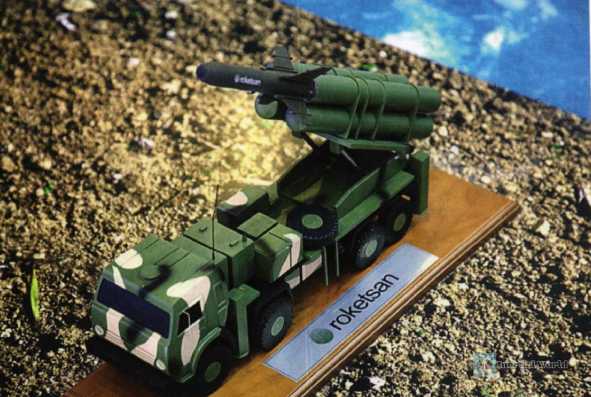
After the final test in June 2021, the Turkish Ministry of Defense Industry announced that the delivery of this type of missile will officially begin in the second quarter of 2021, but did not disclose the quantity. The first batch of ships to be installed are the previous "Island" class F-514 and the F-513, which will be updated with combat systems, followed by the "Istanbul" class, and finally the four "Barbaros" class frigates that will complete the mid-term upgrade in the future and the future TF-2000 class. The "Harpoon" on other ships will continue to be used.
With the completion of the finalization test of the "Sparrow Hawk", the improved "Sparrow Hawk" Block2 has also been launched. Judging from the existing information, this project mainly includes three directions: one is to modify the mobile shore-to-ship model; the second is that the Turkish National Defense Research Institute will develop an unpowered buoyancy carrier and cooperate with Roxan Company to develop a submarine-launched version of the "Sparrowhawk" to meet the needs of submarine-launched long-range strikes before the domestic submarine-launched cruise missile enters service in 2030; the third is to develop an infrared seeker and a radar + infrared dual-mode seeker for the "Sparrowhawk" to improve the terminal anti-interference and multi-type target strike capabilities. Judging from the existing plan, the infrared seeker will be installed externally above the warhead.
At the just-concluded IDEF-2021 Defense Industry Exhibition, Roxan Company officially exhibited the land-based version of the "Sparrowhawk" model named "Land Hawk", and during the exhibition, it formally signed a contract with the Turkish Ministry of Defense Industry for the development of land-based mobile anti-ship missiles. It is planned to carry out relevant launch tests in 2022 and officially put it into mass production in 2025. The difference between the "Land Hawk" and the "Sparrow Hawk" is that it uses an infrared seeker to meet the ability to strike ships and land targets, uses high-precision terrain matching technology (adapting to launch in non-coastal areas on land), and lengthens the missile body by about 90 cm to increase the range to 280 kilometers (limited by the Missile Technology Treaty, the actual range should be larger), and the corresponding warhead weight is increased to 250 kg and the total missile weight is increased to 890 kg. It uses an 8x8 high-mobility off-road chassis with a quadruple launcher. It is reported that the Turkish Navy has purchased the shore-to-ship model. It was also disclosed at the exhibition that in August 2021, Rocksan delivered the first mass-produced "Sparrow Hawk" anti-ship missile to the Navy.
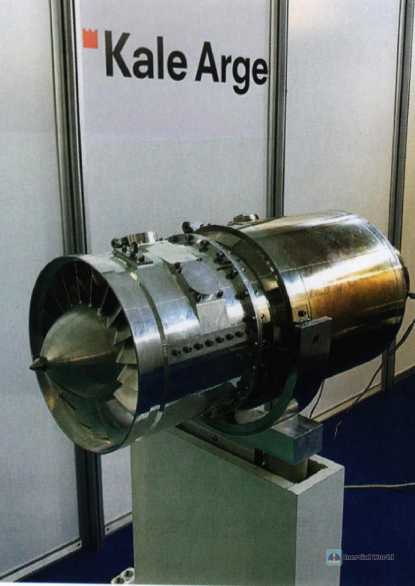
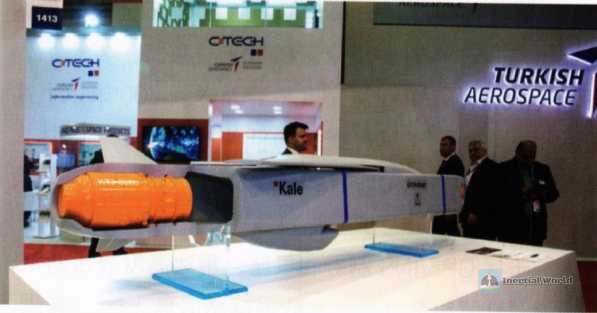
The unspeakable secret of mass production
Although Roxan said that the Sparrowhawk has entered mass production, the reality is that the supply of the power system is difficult to guarantee. The engines used in the current small-scale test Sparrowhawk are all made in France. According to the agreement signed in the summer of 2013, the French Safran company will provide the Sparrowhawk with an improved TRI-40 turbojet engine. This 44 kg 4-stage axial flow engine is 680 mm long and 280 mm in diameter. It can further increase thrust and speed at the end of flight. So far, more than 30 units have been delivered to the earthwork. Compared with the J402-CA-400 turbojet engine with a thrust of 2.92 kN of the Harpoon, the thrust of the TRI-40 can be adjusted between 2.5 and 3.4 kN: and the continuous working time is increased by 10 minutes compared to the former’s 15 minutes. The overall performance is very good. However, as Turkey has frequently intervened in the surrounding areas in recent years, its relations with France have deteriorated. After France imposed an arms sales ban on Turkey, the delivery of TRI-40 engines has stopped, and batch purchases are temporarily impossible, which casts a shadow on the low-speed batch production plan that has already begun.
In fact, as early as the beginning of the "Sparrowhawk" project, in order to meet the needs of this type of missile and SOM series air-launched precision-guided munitions, G-type cruise missiles and future drones, the Turkish Ministry of Defense Industry planned to equip it with domestically produced small turbojet engines. Considering the weak domestic technology, it adopted the development model of introduction + self-research. On February 22, 2012, the Turkish Ministry of Defense Industry signed a contract with Turkey’s Kale Arge Company for the KTJ-3200 missile-borne turbojet engine. So far, the total funding and self-raised funds for this project have reached an astonishing 50 million US dollars. For this purpose, the company has also invested in the construction of Turkey’s first engine high-altitude test bench.
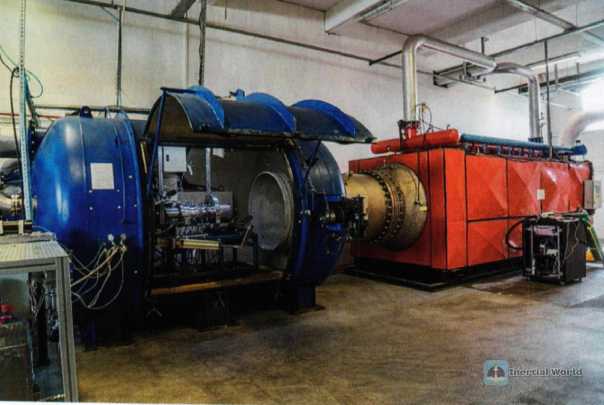
KTJ-3200 is a 4-stage axial-flow turbojet engine, 720 mm long, 300 mm in diameter, and weighs 50 kg; the standard thrust is 3.2 kN, the maximum can reach 3.5 kN, and it can drive a 6kVA AC generator; it uses JP8 or JP10 fuel, the maximum operating altitude and speed are 5,000 meters and 0.95 Mach respectively, and the design service life is 17 hours. It should be pointed out that due to the differences in design structure and size and weight (slightly larger than TRI-40), the "Sparrowhawk" that originally used the TRI-40 engine must make certain modifications to the on-board connection structure and engine control unit (ECU) before it can be replaced, and a complete full-route flight test is also required before it can be officially replaced.
The project was officially launched on April 13, 2012, and the first engine ignition test was carried out on September 19 of the following year, but the subsequent tests were not smooth. At the IDEF-2019 Defense Exhibition, Kale first announced many pictures of the performance tests of this type of engine at various altitudes, speeds, and durability using a high-altitude platform. In early January 2020, KTJ-3200 successfully completed the finalization test at the Kale Development and Testing Center. The vice president of the Kale Group said in an interview that only one part of the KTJ-3200 engine containing 300 parts was purchased from abroad (probably a set of blade disks). Although there were five explosion accidents during the test at up to 38,000 rpm, the relevant tests were finally completed. The first test engines for SOM and Sparrowhawk missiles will be delivered in 2021.
But what is puzzling is that there has been no subsequent delivery of this type of engine since then. On the contrary, there is news that Turkey is negotiating with Ukraine and plans to introduce the A1-35 small turbojet engine production line. In this case, it is very likely that the key components of KTJ-3200 should come from the United States, Germany, France and other countries that have imposed embargoes on Turkey in recent years. Under the urgent demand for mass production of SOM and Sparrowhawk missiles, whether it is the introduction of the French TRI-40, the domestic KTJ-3200, or the Ukrainian engine, the engine strategy of changing from "two legs" to "three legs" does not seem very reliable at present. After the TRI-40 inventory is used up, After the engine, the future mass production plan of "Sparrowhawk" is still uncertain.

Light anti-ship missile development plan
Although the finalization of "Sparrowhawk" has solved the needs of the Turkish Navy’s ship-borne and submarine-based, the old "Penguin" of the missile boat unit and the aviation unit is still unsuccessful, and the anti-sea strike capability of fixed-wing aircraft has always been blank. Although the various types of fixed-wing aircraft of the Turkish Navy were not considered to carry anti-ship missiles at the beginning of their design, in theory, the modified CN-235MPA anti-submarine aircraft’s two side wings and the P-72’s front fuselage’s two ribs have the ability to carry them. Taking into account the carrying capacity of existing missile boats, the Turkish Ministry of Defense Industry and Loksan in 2017 In 2009, the OMGF project was launched, planning to develop a light anti-ship missile using the successful experience of the Sparrowhawk project.
The OMGF project is still implemented by the unit responsible for the Sparrowhawk project, but the engine is changed to another local company-TEI. Due to the delay of the Sparrowhawk project, the OMGF is still in the development stage. According to the data publicly displayed by Rockthorn, the missile is 3.2 meters long with a booster and weighs about 300 kilograms. The smaller size and weight can meet the needs of naval aviation helicopters and fixed-wing aircraft, as well as the replacement of the original missile boats. The appearance of the missile can be described as a smaller version of the Sparrowhawk, and considering the needs of the boat-borne launch tube, the wings in the middle of the body with a larger wingspan adopt a one-folding design, while the relatively small tail rudder and booster stabilizing wing do not have a folding mechanism. At different vehicle speeds and altitudes, the missile’s range is between 100 and 150 kilometers. OMGF The classic designs of the Sparrowhawk, such as the two-way encrypted data link, INS/GPS, and radar pressure altimeter, continue to be used. The OMGF plans to directly adopt the short-wave infrared and active radar dual-mode seeker improved from the Sparrowhawk Block2 to achieve a high hit rate in complex maritime environments.
OMGF’s power components were developed by TEI since April 2018. Unlike the delays of Kale, TEI has much stronger technical accumulation. In the past 10 years, it has completed the development of 8 piston, turbine, and turbofan engines and core engines. The PD-170 piston engine on the Anka UAV and the TJ-90 turbojet engine on the Lightning high-speed target drone are the company’s classic products. On June 19, 2020, the TJ-300 engine ignition ceremony was successfully held at TEI’s micro jet engine test site. The initial design thrust of the TJ-300 is about 1.3 kilonewtons, the diameter is 240 mm, and the weight is less than 30 kg. At present, TE1 has successfully reduced the diameter of this type of engine from 240 mm to 224 mm, and increased the thrust to 1.342 kN. According to the official statement of Rocksan at IDEF-2021, the development of OMGF is progressing smoothly and the first launch test will be carried out soon.
Conclusion
Although the engine has not yet been settled, the development of "Sparrowhawk" has effectively driven the overall development of Turkey’s local military enterprises. The successful development of various subsystems not only provides a model for the development of medium-range anti-ship missiles, but also paves the way for its subsequent domestic cruise missile development plan, and also lays a good foundation for the Turkish Navy to achieve full localization of anti-ship missile weapons in the future.


